Lingli Wang
An Open-source End-to-End Logic Optimization Framework for Large-scale Boolean Network with Reinforcement Learning
Mar 26, 2024



Abstract:We propose an open-source end-to-end logic optimization framework for large-scale boolean network with reinforcement learning.
Multi-view Inverse Rendering for Large-scale Real-world Indoor Scenes
Nov 22, 2022



Abstract:We present a multi-view inverse rendering method for large-scale real-world indoor scenes that reconstructs global illumination and physically-reasonable SVBRDFs. Unlike previous representations, where the global illumination of large scenes is simplified as multiple environment maps, we propose a compact representation called Texture-based Lighting (TBL). It consists of 3D meshs and HDR textures, and efficiently models direct and infinite-bounce indirect lighting of the entire large scene. Based on TBL, we further propose a hybrid lighting representation with precomputed irradiance, which significantly improves the efficiency and alleviate the rendering noise in the material optimization. To physically disentangle the ambiguity between materials, we propose a three-stage material optimization strategy based on the priors of semantic segmentation and room segmentation. Extensive experiments show that the proposed method outperforms the state-of-the-arts quantitatively and qualitatively, and enables physically-reasonable mixed-reality applications such as material editing, editable novel view synthesis and relighting. The project page is at https://lzleejean.github.io/IRTex.
Low Error-Rate Approximate Multiplier Design for DNNs with Hardware-Driven Co-Optimization
Oct 08, 2022
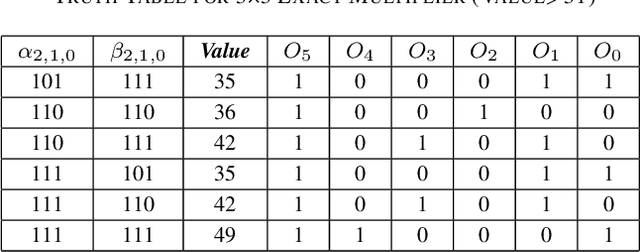
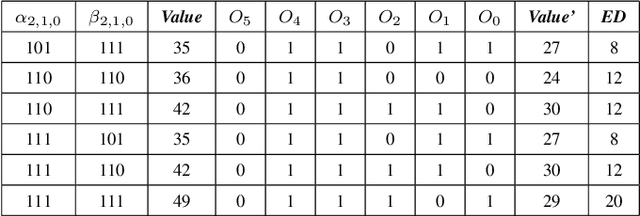
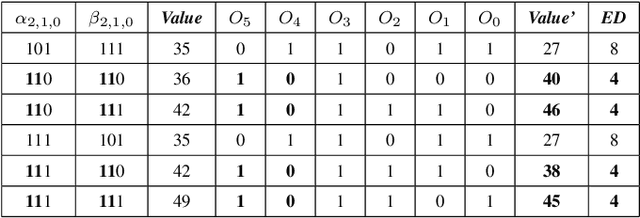
Abstract:In this paper, two approximate 3*3 multipliers are proposed and the synthesis results of the ASAP-7nm process library justify that they can reduce the area by 31.38% and 36.17%, and the power consumption by 36.73% and 35.66% compared with the exact multiplier, respectively. They can be aggregated with a 2*2 multiplier to produce an 8*8 multiplier with low error rate based on the distribution of DNN weights. We propose a hardware-driven software co-optimization method to improve the DNN accuracy by retraining. Based on the proposed two approximate 3-bit multipliers, three approximate 8-bit multipliers with low error-rate are designed for DNNs. Compared with the exact 8-bit unsigned multiplier, our design can achieve a significant advantage over other approximate multipliers on the public dataset.
HEAM: High-Efficiency Approximate Multiplier Optimization for Deep Neural Networks
Jan 25, 2022



Abstract:We propose an optimization method for the automatic design of approximate multipliers, which minimizes the average error according to the operand distributions. Our multiplier achieves up to 50.24% higher accuracy than the best reproduced approximate multiplier in DNNs, with 15.76% smaller area, 25.05% less power consumption, and 3.50% shorter delay. Compared with an exact multiplier, our multiplier reduces the area, power consumption, and delay by 44.94%, 47.63%, and 16.78%, respectively, with negligible accuracy losses. The tested DNN accelerator modules with our multiplier obtain up to 18.70% smaller area and 9.99% less power consumption than the original modules.
MajorityNets: BNNs Utilising Approximate Popcount for Improved Efficiency
Feb 27, 2020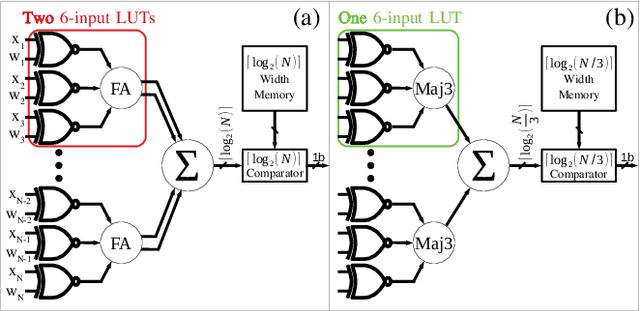
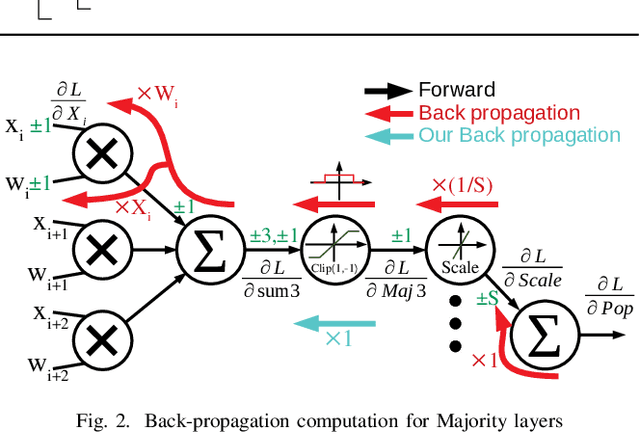
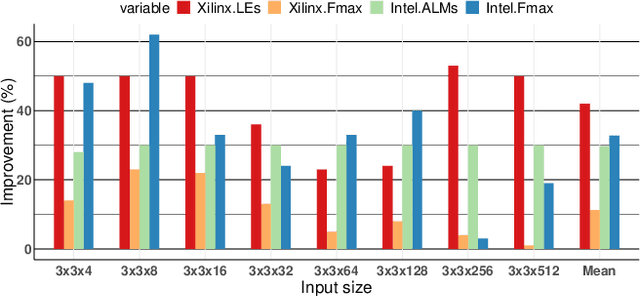
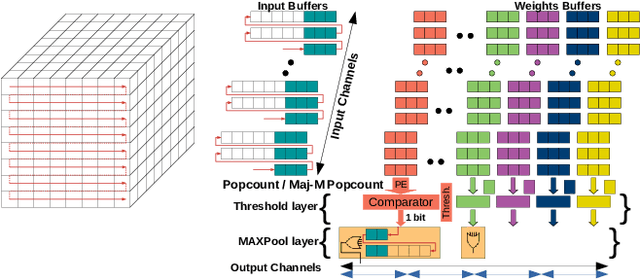
Abstract:Binarized neural networks (BNNs) have shown exciting potential for utilising neural networks in embedded implementations where area, energy and latency constraints are paramount. With BNNs, multiply-accumulate (MAC) operations can be simplified to XnorPopcount operations, leading to massive reductions in both memory and computation resources. Furthermore, multiple efficient implementations of BNNs have been reported on field-programmable gate array (FPGA) implementations. This paper proposes a smaller, faster, more energy-efficient approximate replacement for the XnorPopcountoperation, called XNorMaj, inspired by state-of-the-art FPGAlook-up table schemes which benefit FPGA implementations. Weshow that XNorMaj is up to 2x more resource-efficient than the XnorPopcount operation. While the XNorMaj operation has a minor detrimental impact on accuracy, the resource savings enable us to use larger networks to recover the loss.
* 4 pages
 Add to Chrome
Add to Chrome Add to Firefox
Add to Firefox Add to Edge
Add to Edge